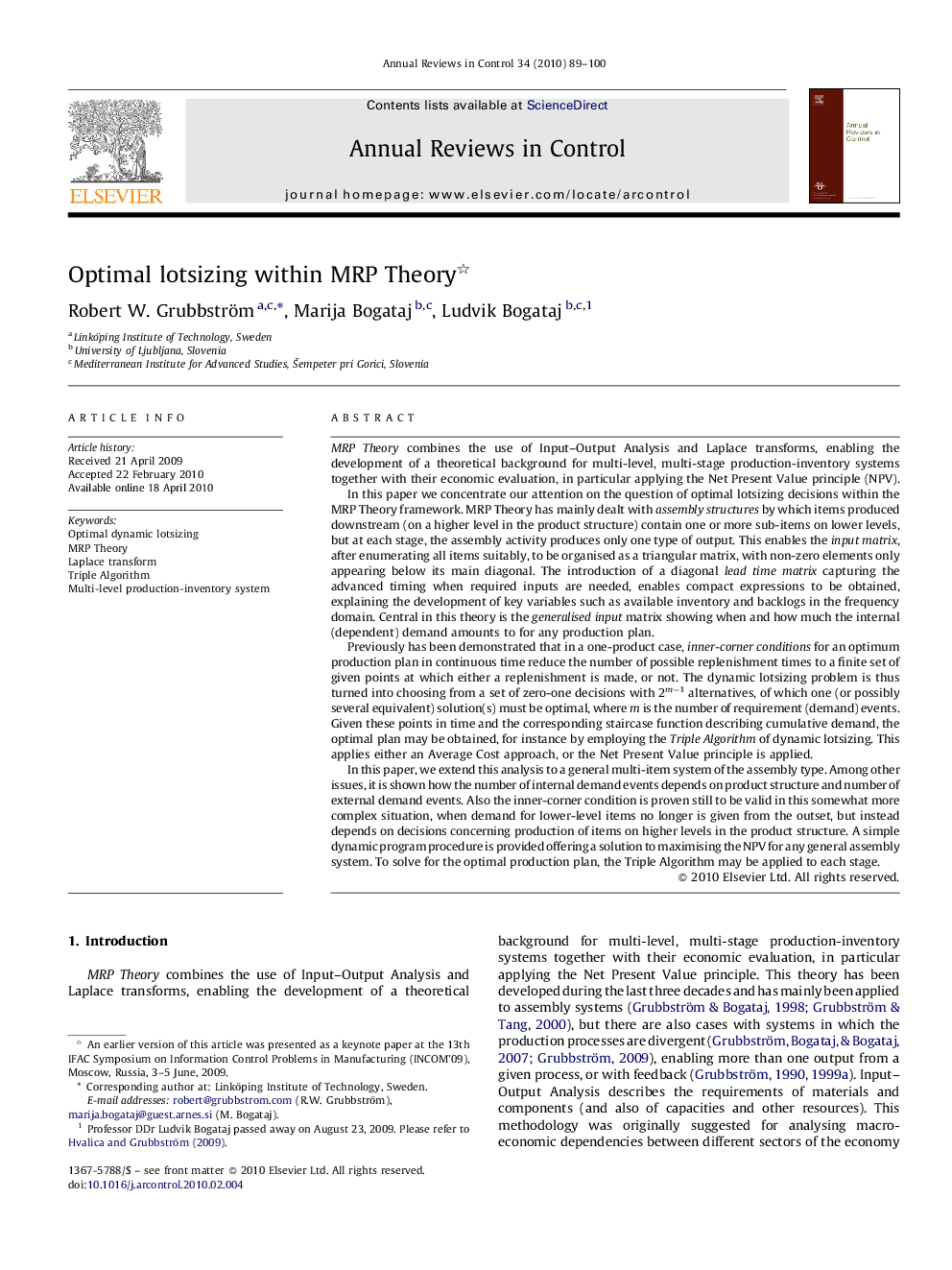| Article ID | Journal | Published Year | Pages | File Type |
|---|---|---|---|---|
| 694913 | Annual Reviews in Control | 2010 | 12 Pages |
MRP Theory combines the use of Input–Output Analysis and Laplace transforms, enabling the development of a theoretical background for multi-level, multi-stage production-inventory systems together with their economic evaluation, in particular applying the Net Present Value principle (NPV).In this paper we concentrate our attention on the question of optimal lotsizing decisions within the MRP Theory framework. MRP Theory has mainly dealt with assembly structures by which items produced downstream (on a higher level in the product structure) contain one or more sub-items on lower levels, but at each stage, the assembly activity produces only one type of output. This enables the input matrix, after enumerating all items suitably, to be organised as a triangular matrix, with non-zero elements only appearing below its main diagonal. The introduction of a diagonal lead time matrix capturing the advanced timing when required inputs are needed, enables compact expressions to be obtained, explaining the development of key variables such as available inventory and backlogs in the frequency domain. Central in this theory is the generalised input matrix showing when and how much the internal (dependent) demand amounts to for any production plan.Previously has been demonstrated that in a one-product case, inner-corner conditions for an optimum production plan in continuous time reduce the number of possible replenishment times to a finite set of given points at which either a replenishment is made, or not. The dynamic lotsizing problem is thus turned into choosing from a set of zero-one decisions with 2m−1 alternatives, of which one (or possibly several equivalent) solution(s) must be optimal, where m is the number of requirement (demand) events. Given these points in time and the corresponding staircase function describing cumulative demand, the optimal plan may be obtained, for instance by employing the Triple Algorithm of dynamic lotsizing. This applies either an Average Cost approach, or the Net Present Value principle is applied.In this paper, we extend this analysis to a general multi-item system of the assembly type. Among other issues, it is shown how the number of internal demand events depends on product structure and number of external demand events. Also the inner-corner condition is proven still to be valid in this somewhat more complex situation, when demand for lower-level items no longer is given from the outset, but instead depends on decisions concerning production of items on higher levels in the product structure. A simple dynamic program procedure is provided offering a solution to maximising the NPV for any general assembly system. To solve for the optimal production plan, the Triple Algorithm may be applied to each stage.
